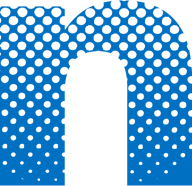
Multiplayer Missions that Matter: Advocacy, Video Games and Networks
In my personal life, I’m passionate about three things: dogs, advocacy and video games. It’s those last two really have me excited lately, thinking about how I can combine my love of video games with my love of advocacy. It turns out, sometimes the two aren’t so different (though I’m still working on how to include dogs — I’ll keep you posted).
I’m thrilled to announce a chapter that Marty Kearns and I have written and published in Emerging Research and Trends in Gamification. This chapter is truly a labor of love and is something we’ve been working on since the fall of 2014. Titled “A Framework for Collaboration Among Game Designers and Social Change Makers: Multiplayer Missions that Matter,” it connects the similarities between advocacy networks, gaming networks, and video games. It also touches on ideas for how the two sides can learn from each other.
Our hopes are two-fold. First, we envision advocates learning how to include gamification techniques in their mobilizations and campaigns to drive engagement. And second, game designers and developers can incorporate lessons from advocacy network building that can help create deeper and stronger connections between players, leading to a more complete and satisfying experience.
After many lunch discussions, hours logged on Steam and lots of research, we came to realize that the Seven Elements that Netcentric has identified as being key to building effective advocacy networks are also present in video games and established video game networks and platforms.
Advocacy network builders and the game industry could benefit from each other’s knowledge. If both game designers and advocates utilize the same framework in their work, it will be easier for each side to understand and learn from the other’s successes or failures, and if game developers and social activists are willing to take a look at each other’s systems – both of which work to connect people together for a common cause – significant advancements could be made in both fields.
I’m excited to hear the feedback on our chapter, and also this framework. Over the next few months, our team will be thinking more deeply about how we can use these insights to help both advocacy organizations and game designers.

